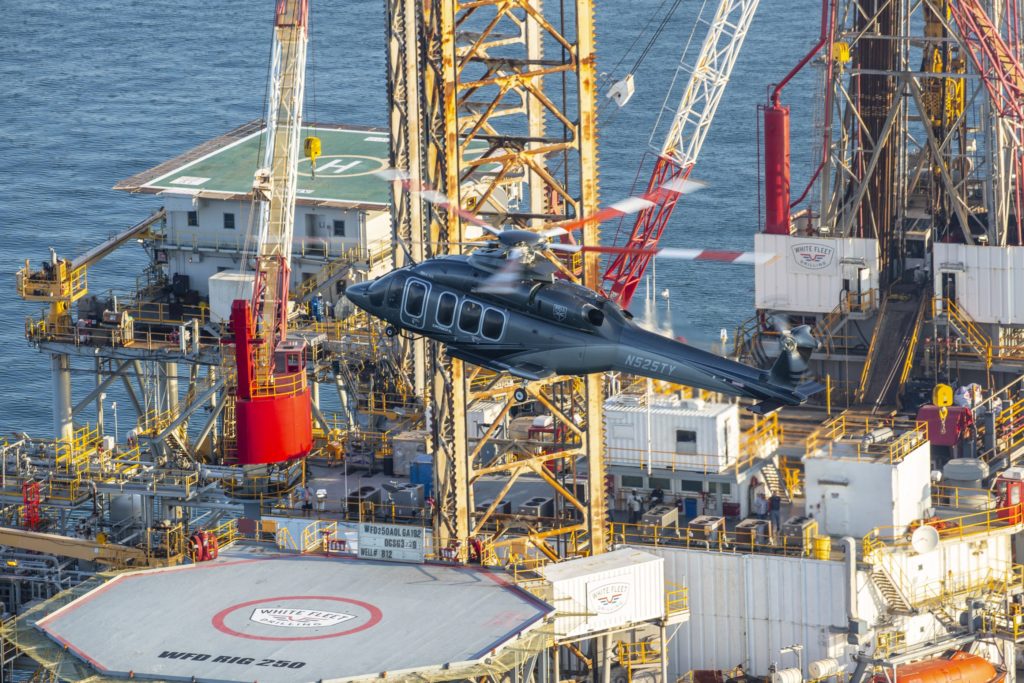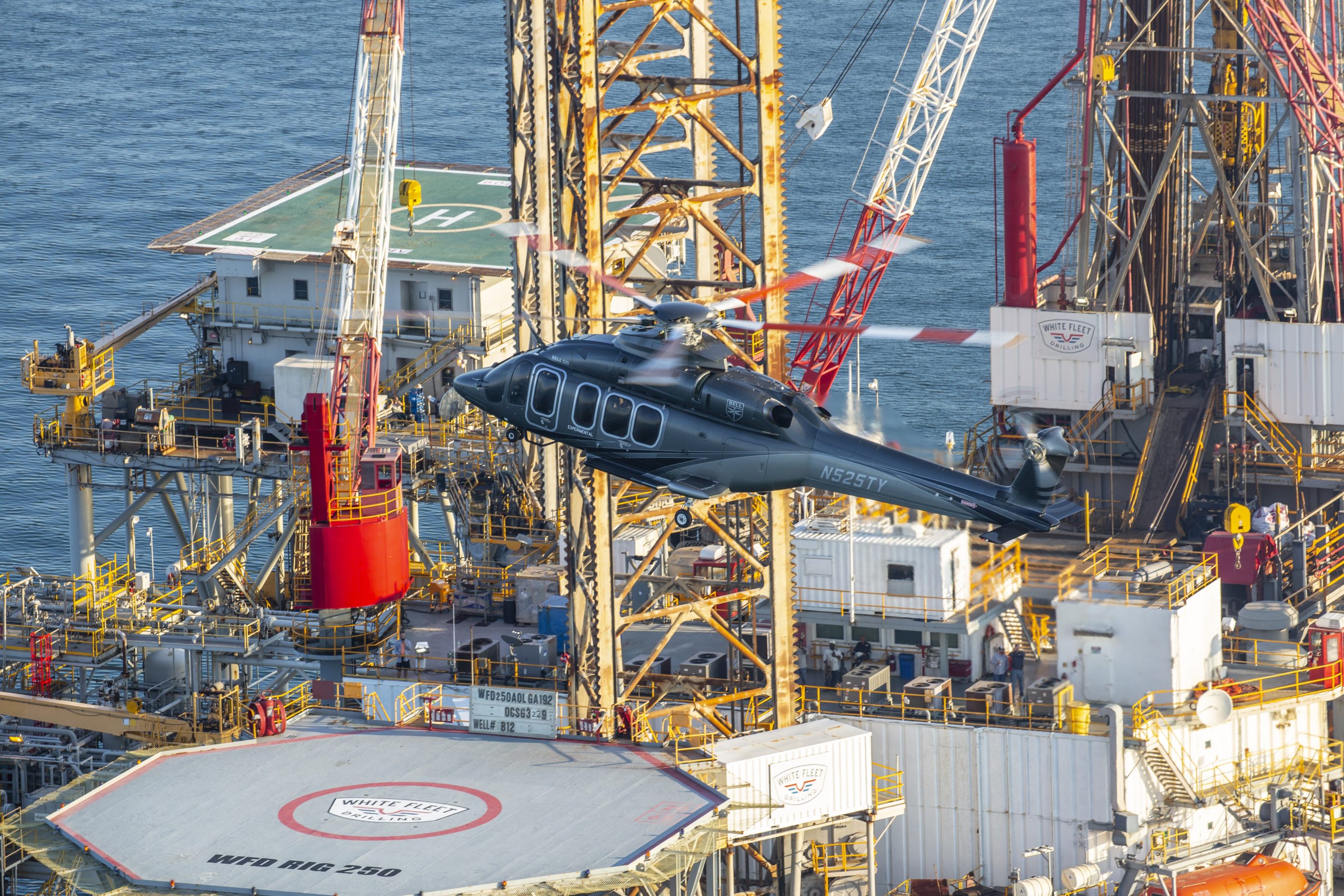Bell is targeting type certification of its long-awaited super medium 525 Relentless this year, as its says it is working on the “last few percent” of the approval program with the Federal Aviation Administration (FAA).

The 20,000-pound gross weight class aircraft will become the first commercial fly-by-wire helicopter when certified, and offers a standard seating configuration for 16 passengers and two pilots,
Bell launched the 525 over a decade ago at Heli-Expo 2012, and the program’s anticipated certification date has progressively shifted to the right throughout its development.
“A day doesn’t go by that we’re not talking about certification and that we’re not really focused on those activities,” Derek Mookhoek, 525 program director, told reporters during a recent media briefing at Bell’s Flight Research Center in Arlington, Texas.
“We’re well into 90-plus percent of the program’s done,” he said. “It’s that last few percent really that we’re working on.”
He said the company was “very quickly” wrapping up those certification items delegated from the FAA to Bell’s Organization Designation Authorization (ODA), but was being paced by the FAA in terms of completing “retained certification deliverables” — items that go through the company’s ODA to the FAA for final approval.
“Everything that’s in our control, everything that we can go get done at Bell, we’re doing that and we’re running out of that work,” said Mookhoek. “The bulk of the work that’s left with the FAA is flight testing. . . . [Certification] is by far paced and tied to us being able to get there with our partners at the FAA. It’s not us against them. It is us together to work it and to show compliance as a team.”
Josh O’Neil, chief engineer on the 525 program, said much of the remaining work was in generating data from the flying aircraft.
“We have advanced flight controls in our fly-by-wire system, and part of the challenge of certification — and the way the 525 has broken new ground — [it] flies differently than much of its competition with the advanced control laws.
“And so to establish what that means in terms of finding compliance, what does the data look like and how is it that you generate that data? In some cases, it’s actually different than what’s come in the past.”
As Bell prepares for type certification of the 525, it continues to have conversations with potential customers surrounding orders and the type’s entry-into-service.
O’Neil said changing offshore market dynamics meant the 525 might actually be entering a market in ascent rather than decline. “The discussions around new exploration increasing the need versus anticipated capacity has changed quite a bit,” he said. “In the super medium space, we’re coming out of a cycle where there are a few factors . . . at play that are pulling back from the dynamics that we’ve seen in the last few years.”
However, the company said it is “not in a place or position” to announce a launch customer, and has not disclosed any order numbers.
“There are quite a few customers that we’re talking to right now, it’s been ongoing, and they’re great conversations,” said Mookhoek. He said certification was the central topic. “Those are the in-detail conversations we’re having with them, showing them the path: ‘this is where we’re at, this is what’s left.’ And there’s a lot of confidence and momentum coming around.”
O’Neil said that the exacting requirements of the initial target market for the 525 — offshore oil-and-gas transport — meant the aircraft needed to prove its reliability in tough conditions.
“The key is showing that it’s going to get up go to work every single day, day after day, in harsh conditions — and just keep going,” he said. “The key for our product is to go out and be able to have that launch that shows, ‘yes, it’s everything that you’re saying it’s going to be.’ ”
Airbus recently chose to launch its new medium H160 in the U.S. through a significant partnership with operator PHI and end customer Shell.
When asked whether Bell was looking at partnerships to launch the 525, O’Neil confirmed those conversations were taking place.
“I think for aircraft in this space, any such transaction absolutely has to be a partnership,” he said. “The fact of the matter is, when the 525 is out there . . . It’s ‘everybody wins together’ — the OEM, an operator and an end user — everybody’s got to win. And you only really make that happen in a pretty significant partnership.”
Bell has developed a “playbook” for the process of incorporating the 525 into a fleet, and this will be tailored for each customer to identify the steps required in the period leading up to and following the arrival of the aircraft.
Mookhoek said first delivery would follow certification — but whether that is this year or next would be driven by how quickly certification is achieved.
Ramping up production capability
Bell has a fully-operational 525 production line at its facility in Amarillo, Texas, with serial numbers 16 through 21 in various stages of completion. As certification nears, the company is ramping up staff numbers on the line. There are currently between 35 and 40 people working on the line, and that number is growing every month.
Once Bell has achieved type certification for the 525, it will pursue production certification to allow it to begin deliveries. The company won’t disclose potential production rates, but O’Neil said “there’s no rate of orders that we can’t keep up with on the 525 line.”
In terms of training to support the type’s entry-into-service, Bell already has a 525 level D full motion simulator in place at the Bell Training Academy that will “be ready to go” when the aircraft is certified, said O’Neil.
The flight test team also recently delivered the 525’s maintenance trainer to the academy — aircraft 2 from the flight test campaign, which was modified and brought up to the latest configuration after its retirement.
Serial numbers 3 and 15 are being used for type certification, with aircraft 14 used for icing certification.
Somewhat unusually, Bell is pursuing icing certification of the 525 at the same time as type certification, and hopes to have the former in hand soon after the aircraft arrives in the market.
“In my experience, that’s unprecedented,” said O’Neil. “We’ll be able to have a really strong entry-into-service in those areas that require icing.”
The 525 will enter the market with an oil-and-gas configuration, and Bell plans to follow this with kits for the VIP and search-and-rescue markets.









